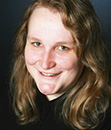Neurocognitive foundations and processing pathways of arithmetic learning and their plasticity in adults as well as in typically and atypically developing children
| Junior research group | Neuro-cognitive Plasticity |
| Duration | 01/2014–12/2017 |
| Funding | Leibniz-Association (Junior Lab within the “Women in Scientific Leading Positions” framework of the SAW-Procedure 2014 of the German pact for research and innovation) |
Project description
In this project, we investigate neural plasticity of the human brain during (numerical) learning as well as the neuro-cognitive foundations of number processing and calculation using neuroimaging techniques (functional Magnetic Resonance Imaging, Diffusion Tensor Imaging). The aim is to determine which brain regions underlie calculation, how these regions interact with each other via fiber pathways, and how these interaction processes are modified by learning processes.
Success in managing modern life is associated substantially with the ability to appropriately deal with and handle numbers. In thepresent project we aim at investigating neuro-functional grey matter and neuro-structural white matter correlates of numerical learning. This focus on the neuro-educational aspects of (numerical) learning addresses the issue of neuroplasticity, i.e., the neural instantiation of learning. In three consecutive steps from (1) an initial investigation of numerical learning in educated adults to (2) a longitudinal evaluation of the neural instantiation of numerical development in typically developing children to (3) the specification of possibly diverging neural networks in atypically developing children, we take a first step from basic research to the emerging scientific field of Educational Neuroscience with the view of suggesting new approaches for diagnostics and remediation of numerical deficiencies.
Cooperations
Prof. Dr. Dr. Hans-Otto Karnath, Center of Neurology, University Hospital Tuebingen
Dr. André Knops, Department of Psychology, Humboldt-University Berlin
Publications
Bloechle, J., Huber, S., Bahnmueller, J., Rennig, J., Willmes, K., Cavdaroglu, S., Moeller, K., & Klein, E. (2016). Fact learning in complex arithmetic – The role of the angular gyrus revisited. Human Brain Mapping, 37, 3061-3079. https://dx.doi.org/10.1002/hbm.23226
Klein, E., Suchan, J., Moeller, K., Karnath, H.-O., Knops, A., Wood, G., Nuerk, H.
C., & Willmes K. (2016). Considering structural connectivity in the triple code model of numerical cognition: Differential connectivity for magnitude processing and arithmetic facts. Brain Structure & Function, 221(2), 979-95. https://dx.doi.org/10.1007/s00429-014-0951-1
Morozova, M., Koschutnig, K., Klein, E., & Wood, G. (2016). Monotonic non-linear transformations as a tool to investigate age-related effects on brain white matter integrity: A Box-Cox investigation. Neuroimage, 125, 1119-1130. https://dx.doi.org/10.1016/j.neuroimage.2015.08.003


